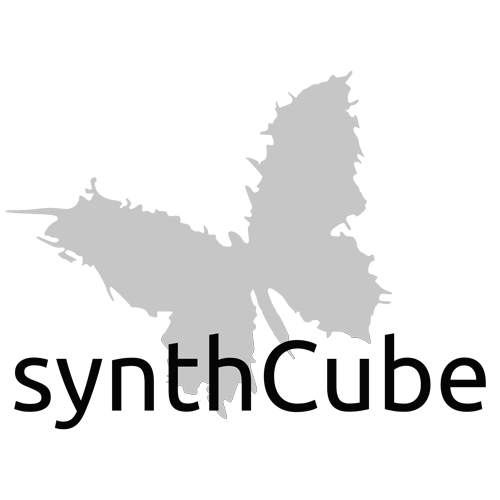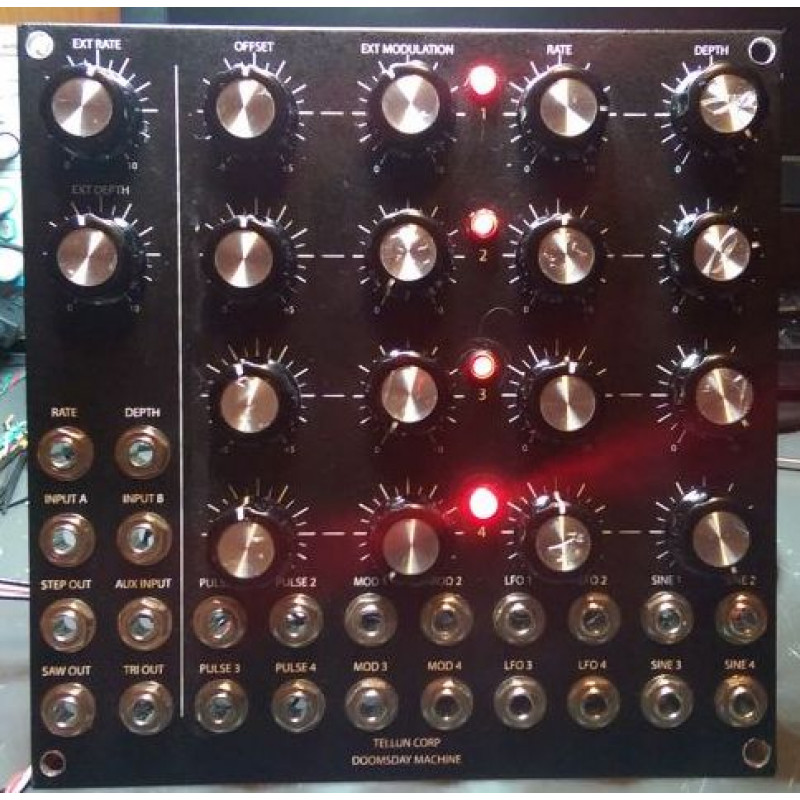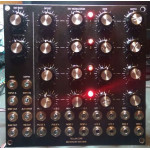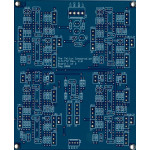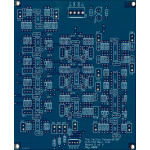Tellun TLN-712 Doomsday Machine
tellun tln-712 doomsday machine
we are delighted to be making scott juskiw's tellun corporation modules available again!
doomsday 2 pcb set
MOTM-format 5U panel from Bridechamber
the bundle includes the pcb set, panel and mounting bracket
documentation here: tellun-712 doomsday machine
assembled module photo courtesy of jonny_w: doomsday muffwiggler thread
The TLN-712 Doomsday Machine is a voltage controlled waveform animator for modular synthesizers. Originally conceived as two separate modules, the TLN-712 comprises two different animation circuits and four voltage-controlled LFOs (low frequency oscillators). The first animator (Thalaran Radiation Emitter) is based on the Multi-Phase Waveform Animator by Bernie Hutchins. The second animator (Cascading Biogenic Pulse) is based on the Pulse Width Multiplier by Craig Anderton. Both animators have been combined into one module along with four LFOs to create a self contained system that makes optimal use of panel space. All you need to add is a single oscillator and a few patch cords to create a marvelous mayhem of sonic madness. Add a second oscillator and you'll never get a date to the prom.
Features:
- Four modulation sources. Each source has an OFFSET pot to set the initial modulation point, a MOD input jack with attenuator to allow for external control of modulation, and an internal LFO. All four modulation sources are internally connected to both animators.
- Each internal LFO has a RATE pot, an LED to provide visual indication of the rate, and a DEPTH pot to set the amount of LFO fed to the animators. Each LFO has a 10 Vpp triangle wave output that is available for external use. Internally, each LFO provides a sine wave to the two animators.
- The rate and depth of all LFOs can be changed en masse using the EXT RATE and EXT DEPTH jacks and attenuators. Use these with a keyboard control voltage, mod wheel, or foot pedal to control both the speed and depth of animation.
- The Thalaran Radiation Emitter has one input jack (IN A) and three output jacks (SAW, TRI, STEP). A sawtooth wave is normally applied to IN A, but sine or triangle waves can also be used (almost any waveform except pulse waves will produce some kind of useful output). With a sawtooth input, the SAW output comprises the input signal plus four phase shifted versions of the input signal (sounds like five sawtooth waves). The phase shift is controlled by the four modulation sources. The TRI output provides a similar effect but with five triangle waves. The STEP output is a bizarre staircase waveform where the depth of each step is controlled by the four modulation sources.
- The Cascading Biogenic Pulse has two input jacks (IN B and AUX) and four output jacks (PULSE 1-4). A triangle wave is normally applied to IN B, but sine or sawtooth waves can also be used (almost any waveform except pulse waves will work). The four PULSE outputs produce an intense pulse width modulation (PWM) effect with single, double, triple, and quadruple pulses appearing at outputs 1-4 respectively. Think of it as PWM on steroids. The PWM effect is controlled by the four modulation sources. The AUX input can be used to provide an additional level of animation, or to cascade two TLN-712s to get even more intense PWM, or to provide a cross-product effect.
- All inputs and outputs are DC-coupled. Either animator can be used to produce strangely wonderful waveforms for modulating other signals. The Cascading Biogenic Pulse can even be used to generate rhythmic gates and triggers.
 | The Doomsday Machine can destroy life forms, ecosystems, and entire planets. Use at your own risk. |
Note that the 3U wide panel layout for this module uses the smaller type of knob found on Encore Electronic's UEG and Frequency Shifter. Most people will probably hate this, but I wanted to get the most functionality in the least amount of space while still maintaining some semblance to the MOTM standard. Free free to design your own panel using standard MOTM size knobs and knob spacing. But be prepared to give up some of the features, otherwise you'll need a 5U wide panel to fit 20 jacks, 18 pots, and 4 LEDs. See the user guide for ideas on alternate panel designs.
Total current draw for TLN-712 is 150 mA @+15V and 150 mA @-15V. Requires 10 Vpp input waveforms for proper operation (e.g. MOTM-300 oscillator).
| Module Parameters | |
| Format | MOTM |
| Panel Size | 5U |
